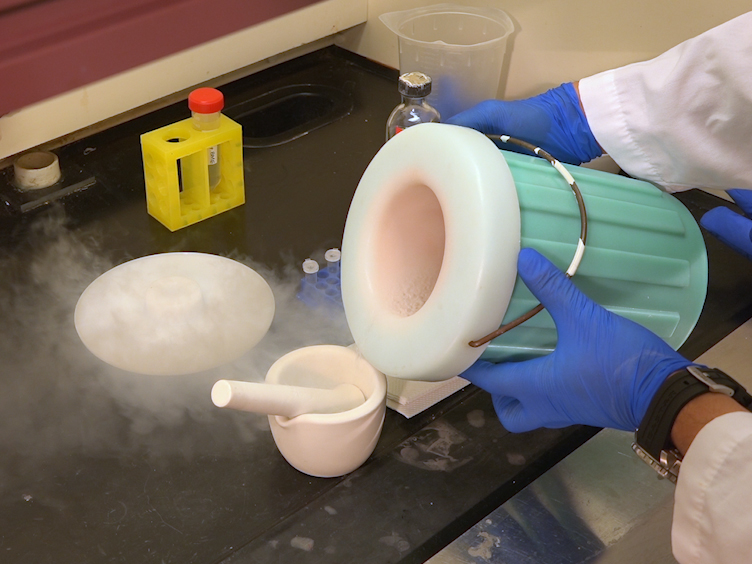A subscription to JoVE is required to view this content. Sign in or start your free trial.
JoVE Journal
Genetics
Non-Aqueous Isolation and Enrichment of Glandular Capitate Stalked and Sessile Trichomes from Cannabis sativa
Chapters
- 00:04Introduction
- 00:40Setup for the Initial Separation of Trichomes from the Plant Material
- 02:08Separation of Trichomes from the Plant Material
- 03:24Separation of Glandular Capitate Stalked and Sessile Trichomes from Other Trichome Types
- 05:13Passing Trichomes Through Micro-Sieves of Decreasing Pore Size and Collection of the Desired Trichomes
- 06:14Results: High-Throughput Isolation & Enrichment of Glandular Capitate Stalked & Sessile Trichomes from Cannabis sativa
- 07:29Conclusion
A protocol is presented for the convenient and high-throughput isolation and enrichment of glandular capitate stalked and sessile trichomes from Cannabis sativa. The protocol is based on a dry, non-buffer extraction of trichomes using only liquid nitrogen, dry ice, and nylon sieves and is suitable for RNA extraction and transcriptomic analysis.










